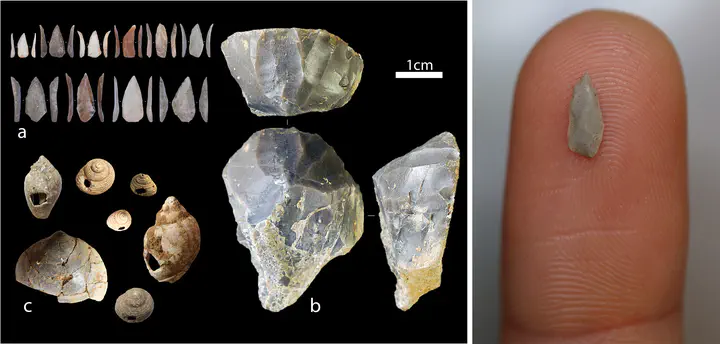A pre-Campanian Ignimbrite techno-cultural shift in the Aurignacian sequence of Grotta di Castelcivita, southern Italy

Abstract
The Aurignacian is the first European technocomplex assigned to Homo sapiens recognized across a wide geographic extent. Although archaeologists have identified marked chrono-cultural shifts within the Aurignacian mostly by examining the techno-typological variations of stone and osseous tools, unraveling the underlying processes driving these changes remains a significant scientific challenge. Scholars have, for instance, hypothesized that the Campanian Ignimbrite (CI) super-eruption and the climatic deterioration associated with the onset of Heinrich Event 4 had a substantial impact on European foraging groups. The technological shift from the Protoaurignacian to the Early Aurignacian is regarded as an archaeological manifestation of adaptation to changing environments. However, some of the most crucial regions and stratigraphic sequences for testing these scenarios have been overlooked. In this study, we delve into the high-resolution stratigraphic sequence of Grotta di Castelcivita in southern Italy. Here, the Uluzzian is followed by three Aurignacian layers, sealed by the eruptive units of the CI. Employing a comprehensive range of quantitative methods-encompassing attribute analysis, 3D model analysis, and geometric morphometrics-we demonstrate that the key technological feature commonly associated with the Early Aurignacian developed well before the deposition of the CI tephra. Our study provides thus the first direct evidence that the volcanic super-eruption played no role in this cultural process. Furthermore, we show that local paleo-environmental proxies do not correlate with the identified patterns of cultural continuity and discontinuity. Consequently, we propose alternative research paths to explore the role of demography and regional trajectories in the development of the Upper Paleolithic.
The paper has been featured in several national and international news outlets, including:
- Ancientpages.com (English)
- Earth.com (English)
- GreenReport.it (Italian)
- IlGiornale.ch (Italian)
- Knowridge.com (English)
- LaNotaDelDia.mx (Spanish)
- LaRepubblica.it (Italian)
- Lenta.ru (Russian)
- MeteoWeb.eu (Italian)
- Phys.org (English)
- PoskoNews.com (Indonesian)
- RedenginePress.com (English)
- SSPDaily.com (English)
- TechAndSciencePost.com (English)
- WorldCulturalHeritageVoices.org (English)
The original press releases are from the University of Tuebingen in English and the University of Siena in Italian.